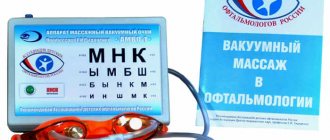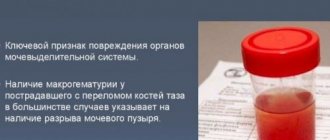A patient who seeks medical help from a doctor receives referrals for tests, which include a stool test performed in a laboratory setting. Its necessity lies in identifying complications in the work of certain organs of the digestive system, detecting harmful microorganisms, determining the reasons that caused stool deviations and factors that contributed to poisoning. Those sent for coprogram are practically not interested in how the biomaterial is collected for laboratory tests so that the research results are reliable. And an important feature is that the analysis is collected in a clean container, which is what a special jar for feces is intended for.
In what container to collect stool analysis?
Many people mistakenly believe that stool can be collected and delivered to a medical laboratory in any container, even a matchbox, as was common in Soviet times.
This choice is erroneous, because on the surface of any container of suitable size there are bacteria and other microorganisms that are absolutely unnecessary for research.
If you need to get the correct information and exclude extraneous factors, you should buy a special container for stool analysis at a pharmacy kiosk.
Such containers for stool donation are made so that a person can collect a test at home or in a hospital. In addition, convenient and safe delivery of biomaterial to the laboratory is ensured, the necessary sterility is maintained, and reliable safety is guaranteed before testing begins.
Dysbacteriosis, intestinal group
To obtain the correct result, material for research is taken before the start of antibacterial therapy or in the intervals between courses of treatment, but not earlier than 2 weeks after its completion.
Attention Do not collect feces from diapers. For infants, collect material from a sterile diaper or pre-ironed onesies. If liquid feces are collected, it can be collected by placing an oilcloth under the baby.
Collection rules
- Feces should be collected in the morning, on an empty stomach.
- Carry out hygiene procedures and first urinate in the toilet and flush.
- Place sterile paper (or an ironed sheet) or a disposable plastic plate in the bowl or bottom of the toilet and perform a bowel movement.
- Collect feces immediately after defecation from different places in a single portion with a special spoon mounted in the lid of a plastic container in a volume of 1–2 g (no more than 1/3 of the container’s volume). Avoid contact with urine and pieces of undigested food.
- Deliver to the laboratory on the day of collection.
The sample can be stored for no more than 2 hours at room temperature; no more than 6 hours at 2-8 °C, more than 6 hours - frozen.
Material for making containers
Jars for stool tests are made from polystyrene material used in medicine or pure polypropylene. Each of the materials is considered chemically neutral, sterile and bacterially pure. All this allows us to minimize the penetration of other-worldly microorganisms into the container and extends the time for transporting the analysis to the laboratory.
The process of producing containers for stool tests is organized taking into account the required norms and regulations. Everything happens in a sterile environment, at temperatures reaching two hundred and fifty degrees Celsius. Production is fully automated, mechanical processes involving manual labor are excluded, which once again confirms the level of sterility of the container.
The container is intended for one-time use!
Blood collection algorithm
Below we will look at how to use the vacuum system:
- Check the directions for research with vacuum tubes.
- Take the needle and remove the cap from the rubber membrane side.
- Insert the needle into the holder and screw it in until it stops.
- Ask the patient to make a fist (but not “fist fist”).
- Apply a tourniquet 8-10 cm above the venipuncture site; the tourniquet can be tightened for a maximum of 1 minute.
- Treat the venipuncture site and wait for the antiseptic to dry.
- Remove the other needle cap just before venipuncture.
- Using one hand, use your thumb to stretch the skin under the vein. Feel the patient's vein and make sure the bevel of the needle is pointing upward.
- Pierce the skin and the wall of the vein.
- Hold the holder with one hand and with the other hand take the test tube and insert the cap into the holder. Holding the ledges of the holder with your index and middle fingers, slide the test tube onto the needle until it stops.
- Do not remove the needle from the vein while the tourniquet is tight.
- The vacuum tube should be filled to the mark on the tube, and the blood will mix with the anicoagulant or preservative in the correct ratio.
- Once the tube is filled to the mark, remove it from the holder. Gently mix the contents by turning it over as many times as necessary.
- Remove the system, remove the needle and place in a container for disposal.
- Apply a swab with an antiseptic to the puncture site or stick a patch with a bactericidal insert.
If necessary, you can alternately connect several vacuum tubes to the holder https://corway.ru/katalog/medical-devices/vakuumnye-probirki/.
In the case when blood is taken from one patient into several tubes, it is necessary to follow the correct sequence of filling them to prevent possible cross-contamination of the sample with reagents from other tubes -
Popular container options
Here are a few examples of samples that our pharmacy chain offers.
Container with spoon 60 ml
They are produced with graduations up to 40 ml, and have matte marks on the outside intended for filling in the required information. This container will hold about 9 g of biological mass intended for research. The lid has a spoon equipped with a 25 ml sampler or a 60 ml spatula, which makes collecting material for testing more convenient.
Jar dimensions:
- height – 5 cm;
- diameter – 4 cm (outer), 6 cm (inner);
- spoon or spatula – 5 cm;
- division – 5 mm.
Sterile container with spoon "EUROKEP"
- volume – 60 ml;
- graduation – 10 ml;
- height – 4 cm;
- weight of the collection container – 10 g;
- lid weight – 4 g;
- diameter (external/internal) – 4.2/3.7 cm.
The container is equipped with an inner spoon attached to the top of the tightly closing lid. During manufacture, such a stool jar is sterilized with ethylene oxide.
How to use tubes for collecting and infusing autoplasma
Another type of tube is used for vacuum sampling of biological material from a vein and infusion of autoplasma as a cosmetic procedure. Such devices are supplied for sale in sealed packaging under a bright green lid with the obligatory inscription “Plasmolifting”. 9 ml of venous blood is taken into the vessel, and platelet-rich plasma (PRP) is pumped back. Inside the tubes there is an anticoagulant in the form of heparin salt and a separation gel filter. The same technology is used by surgeons, dentists and other specialized specialists.
It is important to know here that each tube is in a separate foil package with an expiration date marked. The doctor must open it in the presence of the patient. Replicas from China come in a total package of 20 pieces, of questionable quality.
What is a cryovial and where is it used?
The collection of biological material for long-term storage at a temperature of -196 degrees became possible with the development of cryovials. These are long tubes with a conical bottom and a stopper with external or internal threads. The volume of the cavity is 1-10 cm3. The cavity is filled with biological material to 90%. As a result of the special technology of freezing in liquid nitrogen, the ice does not rupture the cell membranes, and their ability to be used after defrosting is preserved.
Vessels are used to preserve:
- stem cells and embryos;
- eggs and seminal fluid;
- umbilical cord remnant;
- storage of material for IVF.
All these instruments for biochemical analyses, PRP procedures with enrichment of plasma with platelets and preservation of biological material in a nitrogen atmosphere can be purchased from, which ensures the supply of certified glassware and high-quality reagents to any corner of the country.
Features of use
Having acquired the container necessary for donating feces, we begin preparing for the selection of biomaterial. You should know that fresh morning stool is collected, so it is recommended to visit the toilet on the day you plan to visit the clinic. Adults are allowed to submit stool collected the night before for testing, but in this case, the jar will have to be kept closed in a cool place all night.
A day before the selection of material, you should limit your intake of food that is harmful or atypical for your body, and if possible, interrupt the intake of dietary supplements, vitamin complexes, and medications. A ban is also imposed on the intake of alcohol and foods that can cause weak stools. These include large quantities of fruits and fermented milk products. In addition, you will have to monitor the compatibility of foods consumed at this time. To facilitate the process of selecting biomaterial, you should not give cleansing enemas, use laxatives, or use rectal medications.
Immediately before collecting stool, go to the toilet to relieve yourself. After this, water procedures await, during which the anus and reproductive organs are thoroughly washed using baby soap or a composition intended for intimate hygiene. Now you should wipe yourself dry, excluding moisture from getting into the stool, which could distort the results of the research.
Women who are menstruating on the day of submitting stool for analysis will have to use a tampon that can protect against blood getting into the sampled biological material.
You will have to decide in advance where you can perform the procedure with greater comfort. As a rule, when selecting biomaterial for coprograms, one of the well-known methods is used:
- use a duck or a vessel, having thoroughly washed it in a soapy solution and doused it with boiling water (at the end of this preparatory procedure, the container must be dried);
- use the toilet by spreading a special hygienic film purchased at the pharmacy.
When finished with the toilet, use a spatula to remove a small amount of biological material from the container. The container should not be filled to the very top; a volume equal to one teaspoon is sufficient for testing.
In the event that a doctor prescribes several tests, each of which requires its own biomaterial, you will have to purchase the required number of containers.
How to collect a sample correctly?
To ensure that the results of a urine test correspond to the true state of affairs, you should adhere to certain rules:
- The sample collection container must be clean, dry and sterile. It is best to purchase a special plastic container at the pharmacy;
- We have already written that urine should be collected in the morning. Two conditions should be added to this: urine must be collected on an empty stomach, and in addition, the last previous bowel movement must have occurred at least 4 hours before sample collection;
- Before collecting a sample, be sure to perform thorough genital hygiene. This should be done without detergents - under running water. Men must wash their foreskin. Failure to comply with this rule often leads to foreign epithelium entering the sample and false research results;
- It is extremely undesirable for women to donate urine during menstruation - there is a high probability of contamination of the sample with blood from the discharge. If the analysis is required urgently, use a swab before filling the container;
- If mechanical procedures have taken place - cystoscopy or catheterization, you should wait a week until the mucous membrane is restored;
- The maximum storage period for a sample before delivery to the laboratory is 2 hours. Do not expose the sample to high temperatures. If you need some time to store the analysis, it is best to do this in the refrigerator (+5°C);









